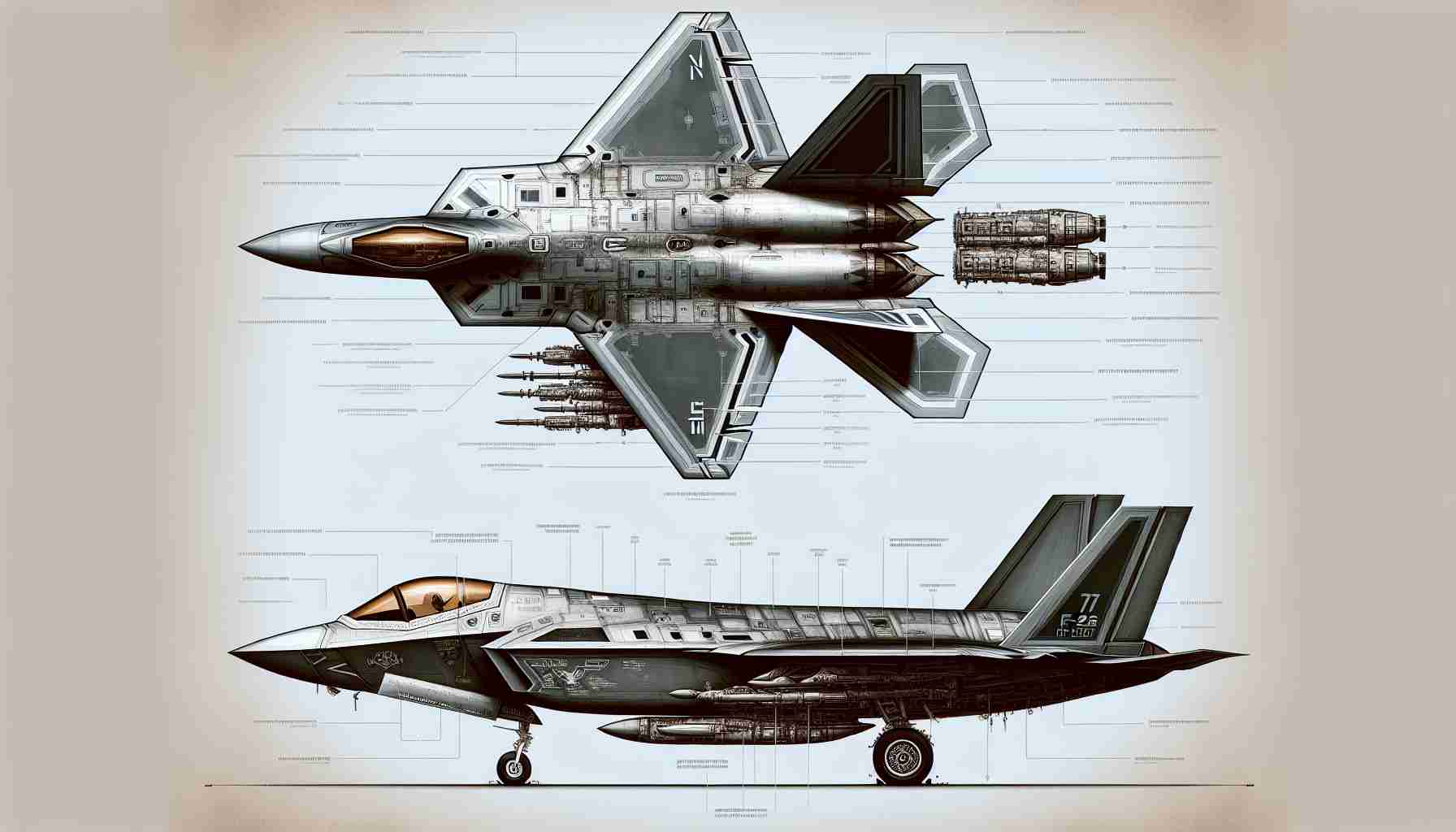The F-22 Raptor and the F-35 Lightning II are two of the most advanced stealth fighter jets developed by the United States. Despite both aircraft being hailed as technological marvels, they have notable differences in their design, mission roles, and dimensions. This article provides a comparative analysis to explore why the F-22 is larger than the F-35.
One of the primary reasons for the size difference between the F-22 and F-35 lies in their intended roles. The F-22, developed by Lockheed Martin in partnership with Boeing and Northrop Grumman, was designed primarily as an air superiority fighter. Its mission emphasizes superiority in aerial combat, which necessitates a larger airframe to accommodate advanced avionics, powerful engines, and enough fuel for extended engagements. The F-22 measures approximately 62 feet in length and has a wingspan of 44.5 feet, allowing it to carry a range of weapons and maintain high maneuverability.
In contrast, the F-35 was designed as a multirole stealth fighter, capable of engaging in air-to-air combat, air-to-ground strikes, and intelligence, surveillance, and reconnaissance (ISR). The F-35 comes in three variants (F-35A for the Air Force, F-35B for the Marine Corps, and F-35C for the Navy) but has a smaller size overall in each version compared to the F-22. The F-35 measures around 51 feet long with a wingspan of approximately 35 feet. This smaller size is intentional, reflecting the F-35’s design for versatility over pure air dominance.
Another factor influencing the size difference is the technological features integrated into each aircraft. The F-22 incorporates an array of sophisticated sensors and systems designed to ensure it maintains an edge in aerial combat. The larger fuselage allows greater capacity for these systems, increasing its effectiveness in contested environments. The F-22’s engines, which are among the most powerful in any fighter jet, also require a larger airframe to optimize performance.
On the other hand, the F-35’s design prioritizes stealth technology and multirole adaptability. Its smaller size reflects an emphasis on high maneuverability and the ability to conduct operations in a variety of environments, including the ability to operate from shorter runways and on Navy aircraft carriers. Combining this with cutting-edge avionics and sensor fusion, the F-35 achieves a balance of performance and stealth without requiring the size of the F-22.
The difference in size also extends to payload capabilities. The F-22 can carry up to 2,000 pounds of ordnance in its internal bays, including air-to-air missiles, while also having the option for external hardpoints, albeit at the expense of stealth. The F-35, although smaller, is designed to carry similar payloads but can also utilize external carriage more effectively due to its operability requirements on multiple platforms, including sea-based operations.
In summary, while both the F-22 Raptor and the F-35 Lightning II are outstanding examples of modern military aviation, the size difference between them can be attributed to their specific mission roles, technological requirements, and intended operational capabilities. The F-22’s larger frame is essential for its role as a premier air superiority fighter, while the F-35’s compact design supports its versatile multirole functionality. This comparative analysis highlights how the distinct design philosophies behind each aircraft have led to their differing dimensions, ultimately affecting their roles in contemporary air warfare.
Tips and Interesting Facts About Stealth Fighter Jets
When it comes to military aviation, the advancements in technology have given rise to some of the most impressive aircraft in history. The F-22 Raptor and F-35 Lightning II are prime examples, showcasing cutting-edge technology and unique design philosophies. Here are some tips, life hacks, and interesting facts that enhance your understanding of these modern marvels.
1. Learn About the Importance of Stealth
Stealth technology is not just about being invisible on radar; it involves a combination of design, materials, and operational tactics. Understanding how these factors work can give you insight into modern military strategies. For instance, the F-35 has a unique shape that reduces radar cross-section, making it harder to detect. You can explore more about this technology and its implications for air combat at Lockheed Martin.
2. Virtual Flight Training Simulations
If you’re interested in military aircraft, consider using flight simulators that replicate the handling and mission profiles of aircraft like the F-22 or F-35. Many software programs let you experience what it’s like to fly these advanced jets, providing an engaging educational experience.
3. Keep Up with Technological Developments
The field of military aviation is always evolving. New technologies, such as artificial intelligence and advanced radar systems, are frequently integrated into new aircraft models. Follow providers and news outlets focused on defense technologies to stay informed on the latest advancements and testing programs.
4. Explore the Mechanisms of Multirole Fighters
Understanding the concept of multirole fighters, such as the F-35, can broaden your perspective on modern warfare. These jets are designed to perform multiple roles in combat scenarios, from close air support to air defense. Learning about their operational capabilities can help you appreciate their versatility.
5. Discuss Air Superiority and Global Defense
Engage with discussions or forums about air superiority and how the presence of fighter jets like the F-22 impacts global defense strategies. You can impress your peers with statistics and facts about the capabilities of these aircraft. Check out relevant articles on Defense.gov for discussions and resources.
6. Understanding Fighter Jet Maintenance
The maintenance of fighter jets is as crucial as their operation. Familiarizing yourself with basic maintenance protocols can enlighten you about the rigorous standards these aircraft must meet to remain combat-ready. Maintenance crews must ensure optimal performance, which can include checking avionics systems, gear, and stealth coatings.
7. The Role of Pilot Training
Piloting advanced fighter jets requires extensive training. The skill set for operating an F-22 or F-35 involves mastering air-to-air combat, situational awareness, and the use of complex avionics systems. Research about pilot training programs and see how they evolve to incorporate new technologies.
8. Appreciate the Design Elements
Take time to appreciate the engineering marvels that these fighter jets represent. Both the F-22 and F-35 feature innovative designs that optimize aerodynamics and stealth. Studying the blueprints or design sketches can enhance your appreciation for aviation engineering.
Understanding these factors related to the F-22 and F-35 not only enriches your knowledge of military aviation but also empowers you to engage in deeper conversations about the role of these remarkable machines in modern warfare. For additional insights and articles on military aircraft, visit Aircraft Compare.






















